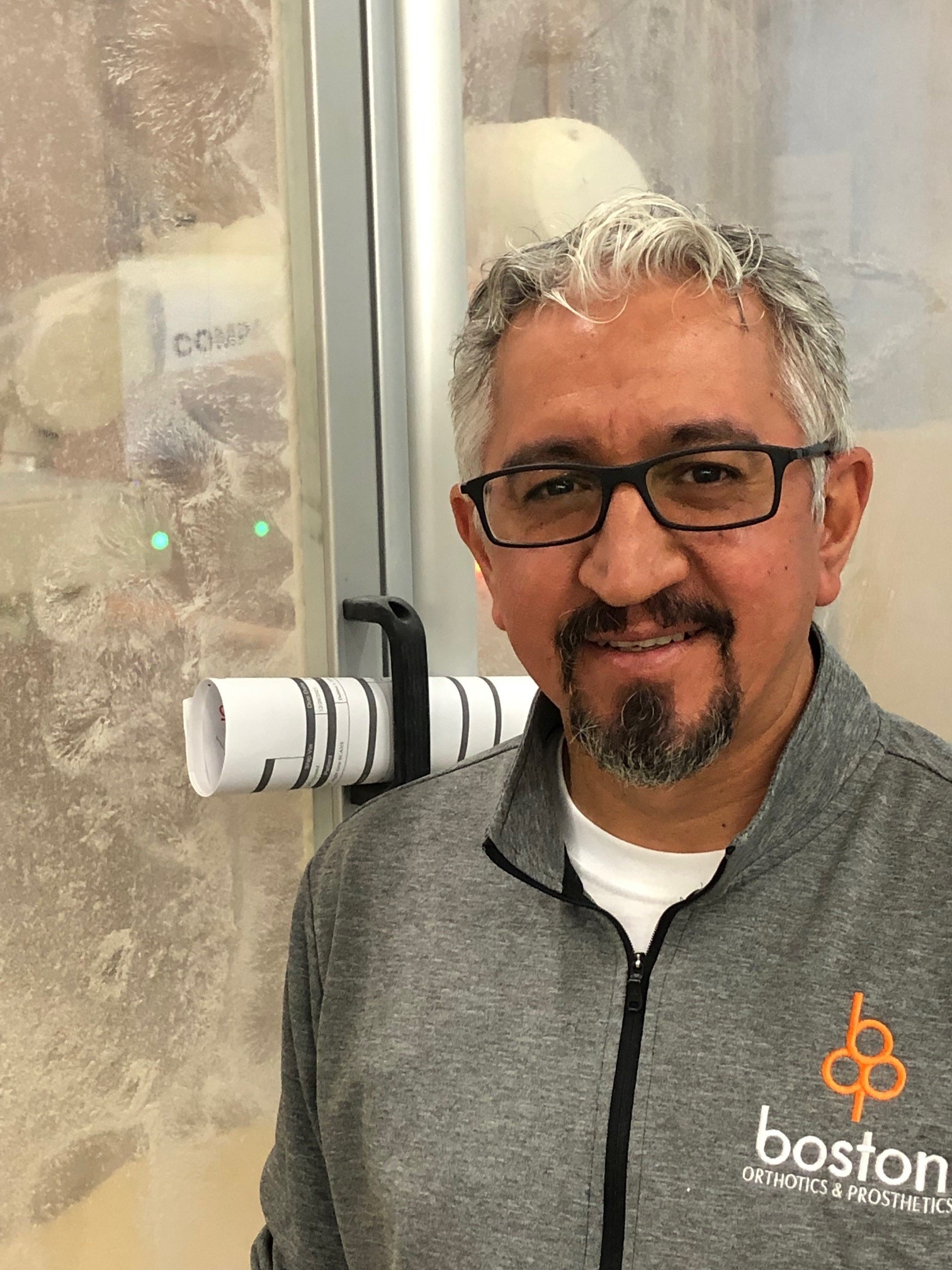Q&A with Tony Gutierrez, CTPO, Boston O&P's Production Manager
Posted on
Tony Gutierrez is an American Board for Certification (ABC) certified technician prosthetics orthotics (CTPO) and Boston O&P’s Production Manager working in the Avon, MA production facility. In this Q&A, Tony shares how he got into the field, what he loves about his job, and how working in a clinic early on guides his thought process on manufacturing the products he makes to help patients.
 How did you become interested in the field of orthotics and prosthetics?
How did you become interested in the field of orthotics and prosthetics?
I have always liked to help people and in this field I can help so many people who are truly in need. What first drew me to the company years ago was their pledge to help “straighten crooked backs.” Little did I know that was just the beginning.
As the overseer of manufacturing for all Boston O&P products, what would you say the biggest advancement has been in O&P manufacturing over the last 5 years? 10 years? 20 years?
I have seen so many advancements, most recently our standardized processes, which help our outcome-based products. These processes have replaced the prior focus on clinicians’ preferences. Products produced now by Boston O&P are consistently made to exacting specifications, eventually leading to better outcomes for our patients.
Another big advancement, at least from a Boston O&P perspective, was our move to being an employee-owned company, which has led to more accountability among our workers.
A decade ago, automated Computer Aided Design (CAD) ushered in a new era of efficiency and accuracy in our production, enabling us to guarantee repeatable and consistent products.
It’s hard to believe, but 20 years ago was the turn of the 21st century and at that point the big deal was custom image transfers for our patients to select for their braces. We went from plain, white medical products to those with cartoon characters and superheroes. That was pretty good for back then.
What role does LEAN play in the Boston O&P system?
Using the LEAN process, we as a company were able to see where we were creating waste that provided no value to the patient. With LEAN, we were able to eliminate this waste and help even more patients who need our services. This has lead to shorter delivery times, reduced costs and an overall more efficient process. LEAN is now part of our everyday culture.
You have been at Boston O&P for nearly 30 years, so you have seen the manufacturing process, as well as the employee experience, both before the implementation of LEAN and after. What are some of the biggest differences you’ve seen?
With LEAN, we now immediately see any hint of waste. It’s a gift and a curse. Everyone involved in the process is empowered to express suggestions throughout the day. Each department—customer service, clinics, billing, and fabrication—understands what the other departments are going through and work together to make the flow better.
How has LEAN changed the manufacturing process as well as what it’s like to work at Boston O&P?
LEAN is our culture now. It’s not just “do it and be done.” It’s continuous improvement and continually looking for ways to improve the products and minimize daily stoppages. In the past we’d come to work in the morning and never know how many patients we’ve helped. We now have a short daily huddle (team meeting) at the beginning of the morning shift to review yesterday’s results and today’s goals. With this improved communication, everyone now knows where we stand each day.
What are some of the things you do daily to improve Boston O&P’s manufacturing process?
We have quality control by department, which means we don’t pass issues on to the next department in the process. If fabrication is unsure of a note entered by the clinician, no guesses are made and then passed on to shipping: instead the fabricator or customer service picks up the phone to clarify the note, even if it adds a little time to that step in manufacturing. In the end, we get the right products made, specifically for that patient, out the door knowing that it will do what it’s intended to do.
What has been your most rewarding experience working in your field?
When I earned my ABC CTPO certification, it was the culmination of decades of working in the trenches combined with the formality of the certification process. It was the highlight of my professional career so far.
What do you see as the most exciting advancement in manufacturing for scoliosis and other O&P devices?
Our ability to laser scan our patients and then being able to generate a finished product, to precise measurements, in a matter of hours, is incredible. In comparison, when you think that we used to have to wait for a cast to be made, dried, and shipped. That the cost of the scanners is dropping is good news for smaller facilities.
What do you think makes Boston O&P’s products differ from those offered by other companies, both in terms of how they are manufactured and otherwise?
Our products, for both scoliosis and plagiocephaly, are evidence-based, meaning our brace designs are supported by results. The team of doctors, clinicians, and physical therapists work together to improve the patient experience. This team approach leads to continual improvement of our products, ensuring that patients get the best product available for their condition.
What experiences have done the most to expand your skill set and improve the Boston O&P manufacturing process to help patients?
Working at Boston Children’s Hospital for over a decade, I saw directly the impact of our braces on our patients. Seeing a mother terrified that she would hurt her baby when removing the Boston Band helmet inspired me to invent the hinge-style helmet. This makes the experience easier for the caregiver. Today, all Boston O&P clinicians suggest refinements that improve the patient’s experience.

